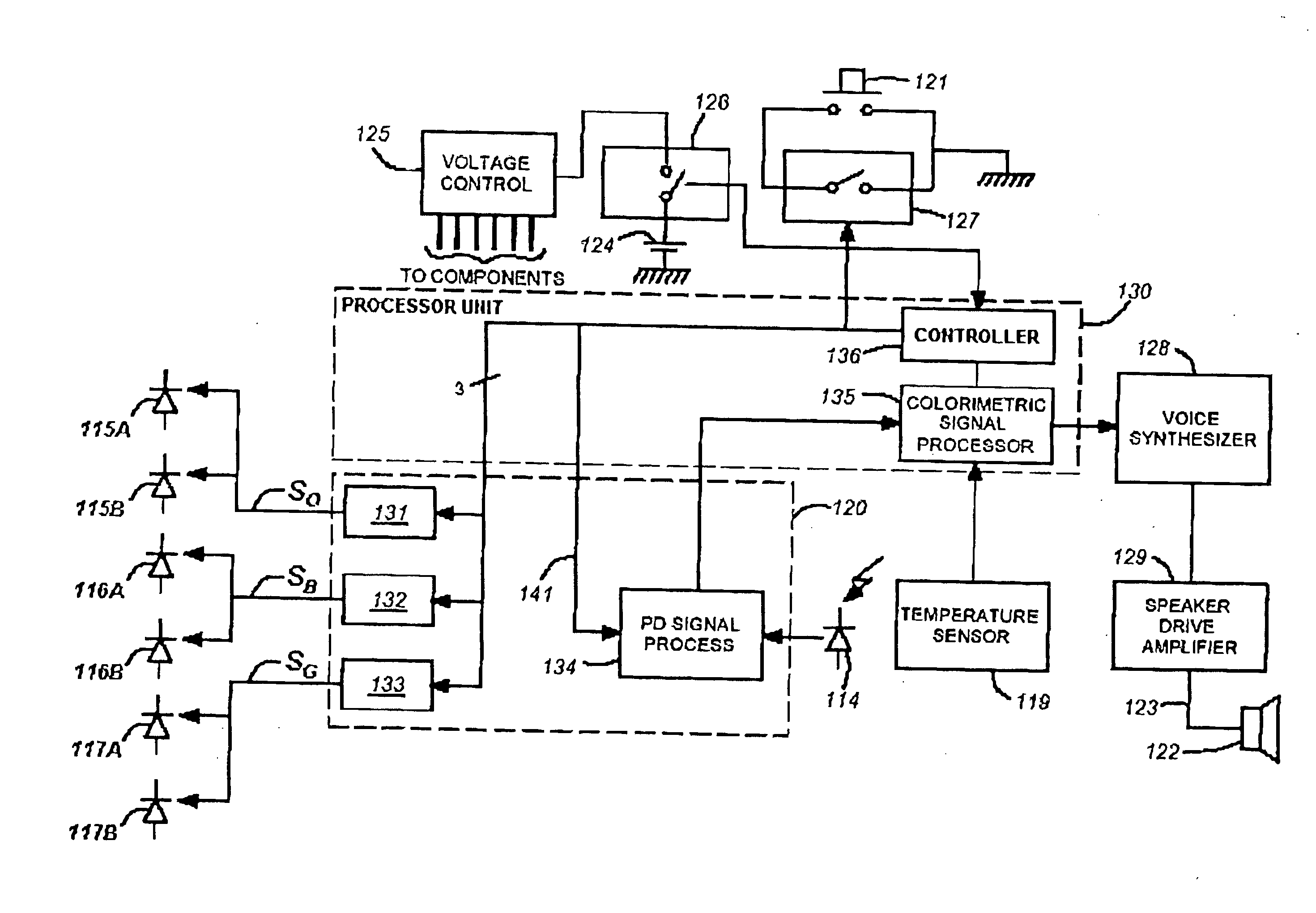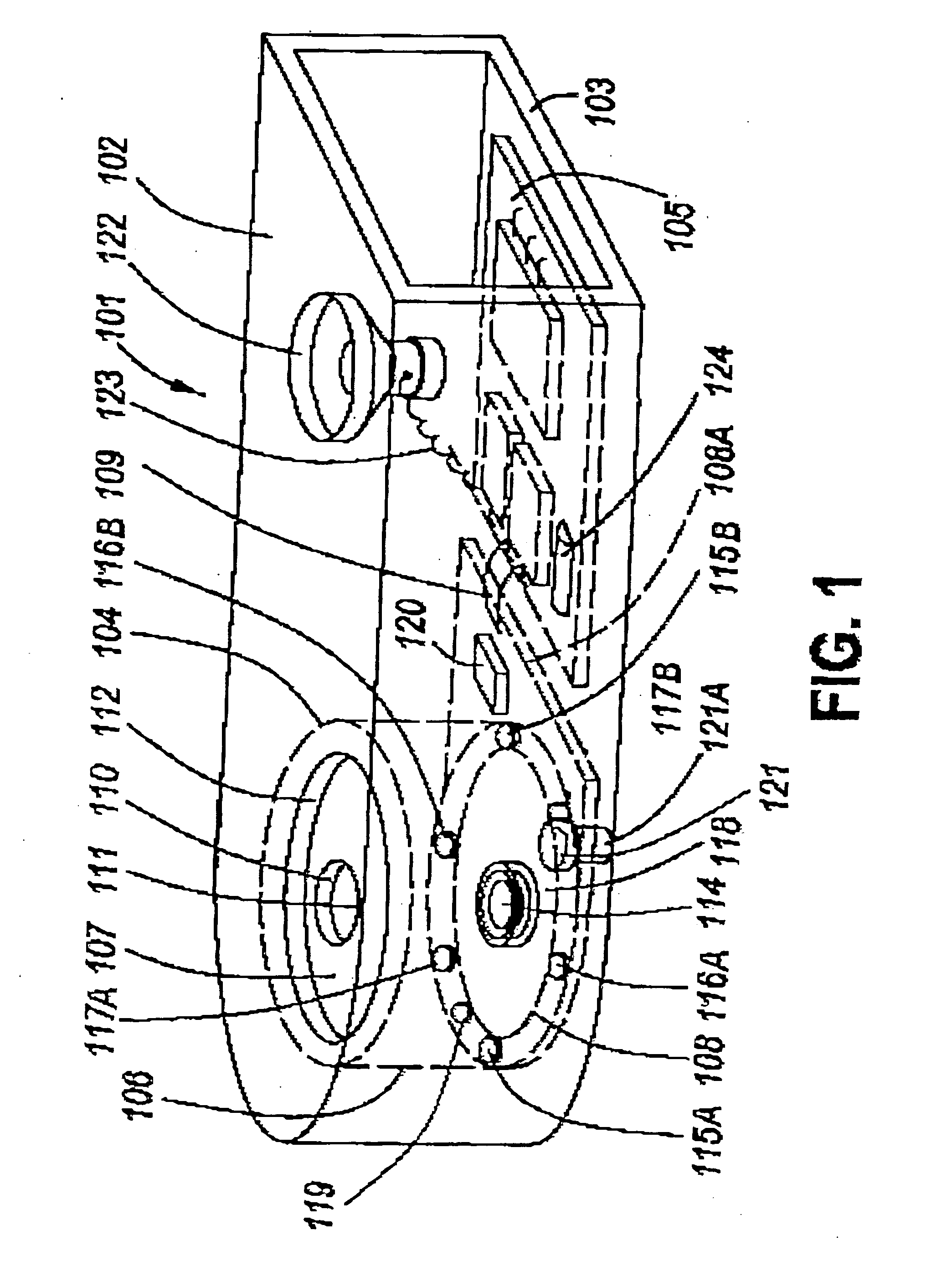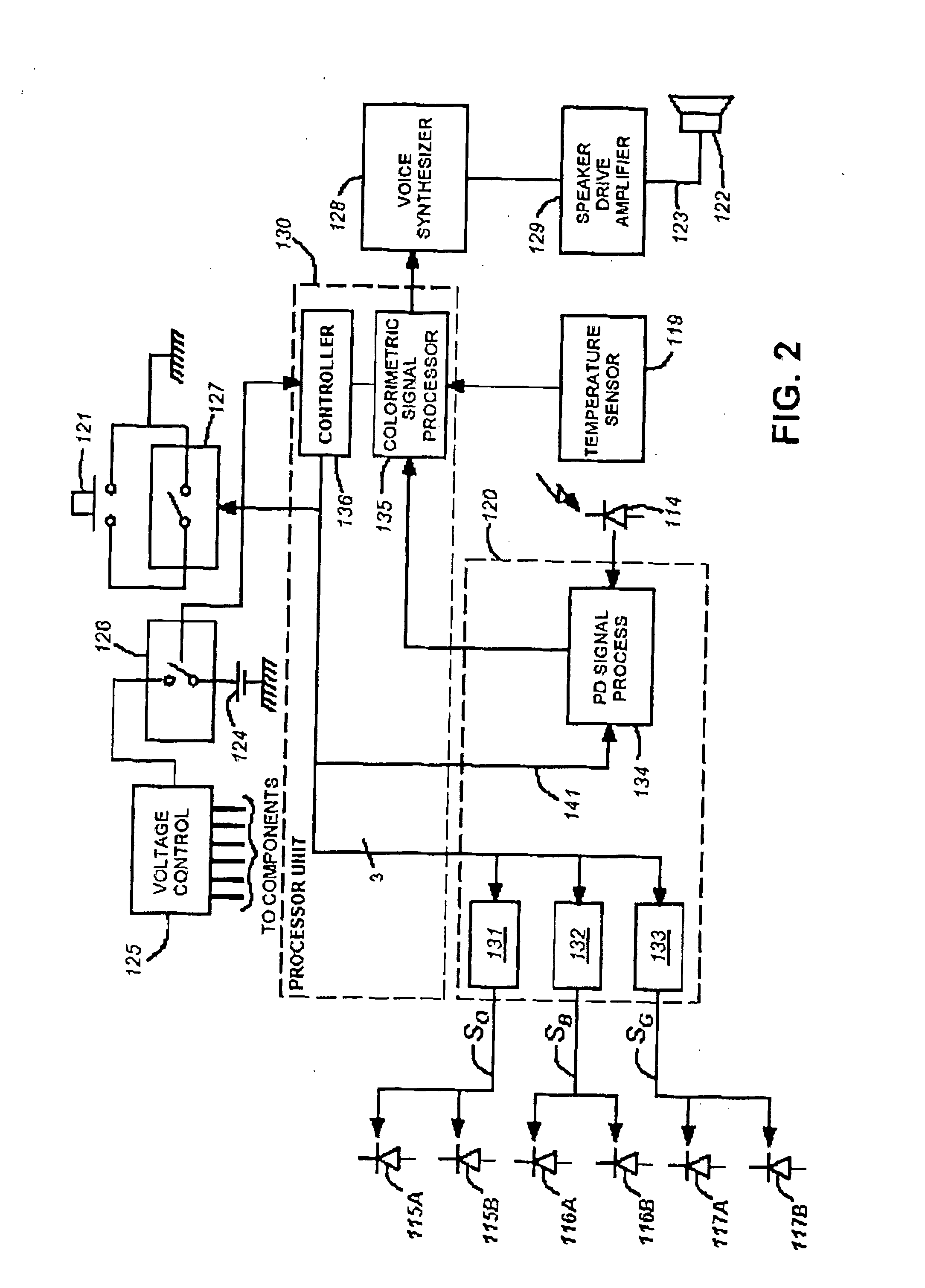Colorimetric device and colour determination process
a colorimetric device and colour determination technology, applied in the field of colorimetric devices and colour determination processes, can solve the problems of increasing cost and reducing ruggedness, not addressing the problem of specular reflection affecting colour determination, and people who are colourblind have difficulty in choosing clothes from their wardrobes
- Summary
- Abstract
- Description
- Claims
- Application Information
AI Technical Summary
Benefits of technology
Problems solved by technology
Method used
Image
Examples
Embodiment Construction
[0071]FIG. 1 is a perspective view of a colorimetric device, specifically a colorimeter 101 comprising a palm-sized casing 102, shown with one end removed, and a base 103. A sensor unit 104 is mounted upon the base 103 at one end and a printed circuit board (PCB) 105 is mounted upon the base 103 at its opposite end.
[0072] The sensor unit 102 comprises a cylindrical housing 106 closed at one end by an integral end wall 107 and at its opposite end by a second printed circuit board 108 which has a plinth portion 108A extending beyond the housing 106 towards the first printed circuit board 105, to which it is connected by a cable 109 The second printed circuit board 108 seals that end of the housing 106 and mounts the sensor unit 102 upon the base 103.
[0073] The length of the housing 106 is such that the end wall 107 abuts the inner surface of the casing 102. A central aperture 110 in the end wall 107 is sealed by a transparent window element 111. The casing 102 has a hole 112 which i...
PUM
 Login to View More
Login to View More Abstract
Description
Claims
Application Information
 Login to View More
Login to View More - R&D
- Intellectual Property
- Life Sciences
- Materials
- Tech Scout
- Unparalleled Data Quality
- Higher Quality Content
- 60% Fewer Hallucinations
Browse by: Latest US Patents, China's latest patents, Technical Efficacy Thesaurus, Application Domain, Technology Topic, Popular Technical Reports.
© 2025 PatSnap. All rights reserved.Legal|Privacy policy|Modern Slavery Act Transparency Statement|Sitemap|About US| Contact US: help@patsnap.com



